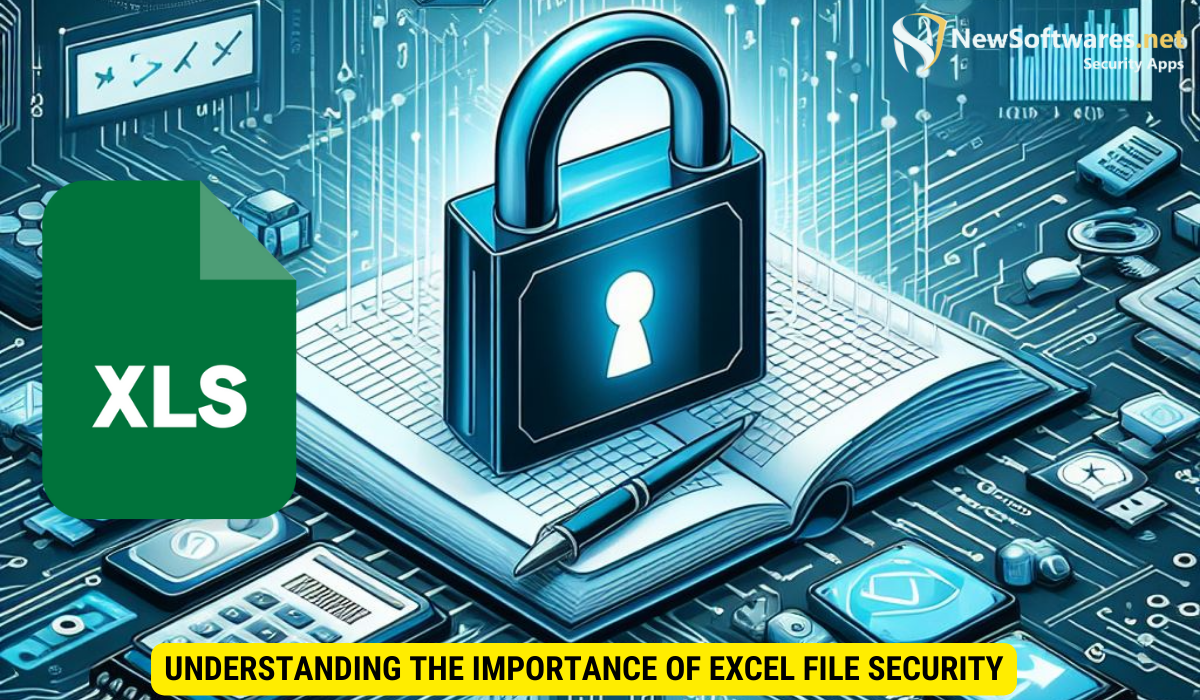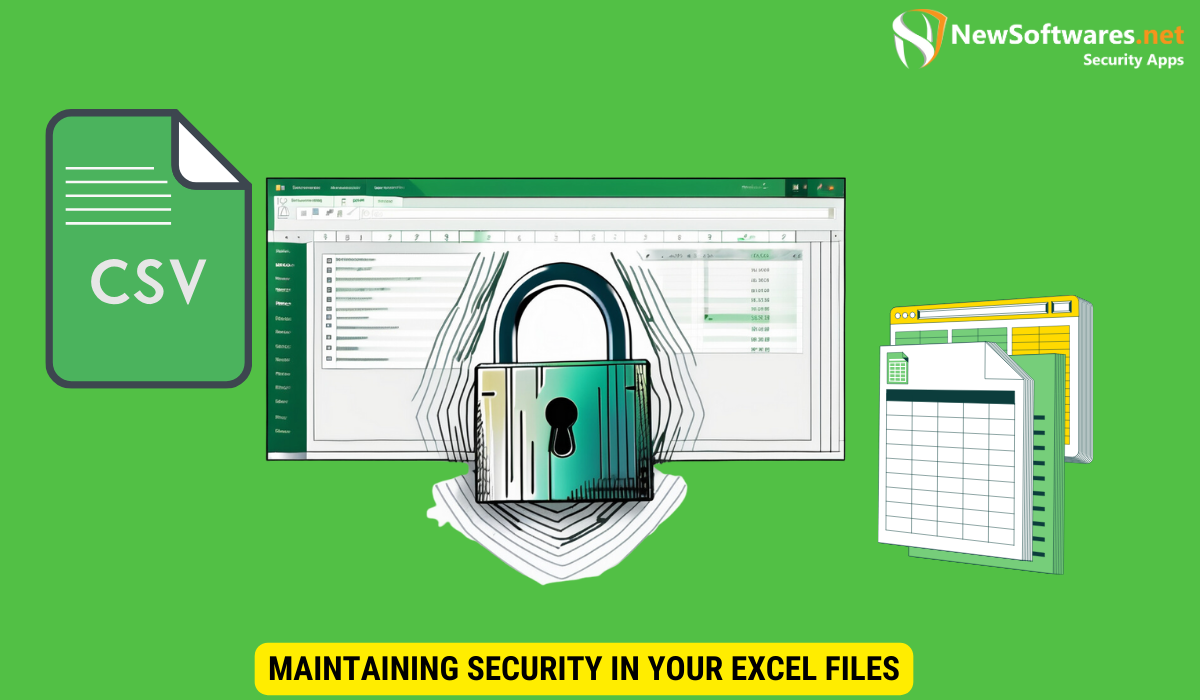To change password-protected Excel files, open the file, click on the “File” tab, select “Protect Workbook,” choose “Encrypt with Password,” enter the current password, delete it, and enter a new one. Click “OK” to save changes.
In today’s digital age, maintaining the security of our data has become more important than ever. One area of concern for many individuals and businesses is the security of their Excel files. Excel is a widely used tool for storing and manipulating data, but it is crucial to understand the importance of file security and the steps necessary to transition to a more secure environment. I will guide you through the process of changing password-protected Excel files and provide tips to maintain security.
Understanding the Importance of Excel File Security

Excel files often contain sensitive information, ranging from personal data to business secrets. Protecting this information is essential to prevent unauthorized access or data breaches. Password protection plays a crucial role in ensuring the security of your Excel files.
Aside from password protection, another important aspect of Excel file security is encryption. Encryption involves converting the data in your Excel file into a code, making it unreadable to anyone without the decryption key. This adds an extra layer of security, especially when sharing files over networks or storing them in cloud services.
The Role of Password Protection in Excel
Password protection in Excel provides a layer of security by requiring anyone attempting to open the file to enter the correct password. This prevents unauthorized users from accessing the file and viewing its contents. Without password protection, your data becomes vulnerable to theft or misuse.
Furthermore, it is recommended to regularly update your passwords and avoid using easily guessable combinations. Strong passwords with a mix of letters, numbers, and special characters enhance the security of your Excel files and reduce the risk of unauthorized access.
Risks of Unsecured Excel Files
Leaving Excel files unsecured puts your data at risk. Unauthorized individuals may gain access to sensitive information, leading to identity theft, financial loss, or company data breaches. It is essential to recognize the potential risks and take the necessary steps to secure your Excel files.
Moreover, implementing access controls within Excel can help restrict who can view, edit, or share the file. By setting permissions and restrictions, you can ensure that only authorized individuals have the necessary access to the data, reducing the chances of a security breach.
The Basics of Password Protected Excel Files
Understanding how password protection works in Excel is key to maintaining the security of your files.
Excel is a powerful tool for organizing and analyzing data, but it’s important to protect sensitive information from unauthorized access. Password protection is a crucial feature that adds an extra layer of security to your Excel files, ensuring that only authorized users can view or modify the data.
How Password Protection Works in Excel
When you password protect an Excel file, you create a barrier that prevents unauthorized users from viewing or modifying the file without the correct password. Excel uses strong encryption algorithms to secure the data and ensure only those with the correct password can access it.
It’s worth noting that password protection in Excel is not foolproof, and there are tools available that can help crack passwords. To enhance security, consider using file-level encryption or other security measures in addition to password protection.
Common Password Protection Practices
When setting a password for an Excel file, it’s important to follow best practices to ensure the security of your data. Use a combination of uppercase and lowercase letters, numbers, and special characters to create a strong and unique password. Avoid using easily guessable information such as names or birthdays.
Additionally, consider changing your passwords regularly and never share them with others. This helps prevent unauthorized access and reduces the risk of data compromise.
Remember, password protection is just one aspect of securing your Excel files. It’s also important to be mindful of who you share your files with and to regularly update your security practices to stay ahead of potential threats.
Transitioning to a More Secure Excel Environment
Changing passwords on your Excel files is a proactive step towards enhancing their security.
Steps to Change Passwords on Excel Files
To change the password on an Excel file, follow these steps:
- Open the Excel file you wish to change the password for.
- Click on the “File” tab and select “Protect Workbook.”
- Choose “Encrypt with Password” option.
- Enter the current password and click “OK”.
- In the dialog box that appears, delete the existing password and enter a new one.
- Click “OK” to save the changes and apply the new password.
Tips for Creating Stronger Passwords
Creating strong passwords is essential in maintaining the security of your Excel files. Consider the following tips when setting up new passwords:
- Use a combination of uppercase and lowercase letters, numbers, and special characters.
- Avoid using easily guessable information, such as names or birthdays.
- Use a unique password for each Excel file to prevent a breach in one file from compromising others.
- Regularly update your passwords to ensure ongoing security.
Maintaining Security in Your Excel Files

Transitioning to a more secure Excel environment is not a one-time task. It requires consistent efforts to maintain the security of your files.
Regularly Updating Your Excel File Passwords
As mentioned earlier, updating your passwords regularly contributes to the ongoing security of your Excel files. Set a schedule to review and change passwords at predetermined intervals, such as every three months or annually. This reduces the chances of unauthorized access to your data.
Best Practices for Excel File Security
In addition to changing passwords, several best practices can help enhance Excel file security:
- Limit access to Excel files to only those who truly need it. Restricting access reduces the risk of unauthorized personnel mishandling or sharing sensitive information.
- Consider implementing two-factor authentication for added security. This involves using both a password and an additional verification method, such as a fingerprint or text message code, to access Excel files.
- Regularly update your Excel software to ensure you benefit from the latest security patches and enhancements.
- Keep your antivirus software up to date to protect against malware or malicious attacks.
Overcoming Challenges in Transitioning Security
Transitioning to a more secure Excel environment might present challenges along the way. Being prepared to address these challenges is crucial.
Dealing with Forgotten Passwords
If you forget the password for an Excel file, recovering or resetting it can be difficult. Excel offers limited options in recovering passwords, often requiring external software or professional assistance. Avoid the inconvenience and potential loss of data by keeping track of your passwords or utilizing password management tools.
Managing Multiple Secure Excel Files
When dealing with a large number of Excel files, managing the associated passwords and security measures can become overwhelming. Consider using password management software to securely store and organize your passwords. These tools provide a convenient and secure way to handle multiple passwords, reducing the risk of forgetting or misplacing them.
Key Takeaways
- Password protection plays a crucial role in securing Excel files.
- Regularly update passwords and create strong, unique passwords for each file.
- Limit access to Excel files to authorized individuals only.
- Regularly update software and antivirus programs to benefit from the latest security enhancements.
- Manage multiple passwords and security measures using password management software.
FAQs
Q: Can I remove the password protection from an Excel file?
A: Yes, it is possible to remove password protection from an Excel file. However, keep in mind that doing so will expose your data to potential risks. Only remove password protection if you are certain it is no longer necessary or if you have alternative security measures in place.
Q: Can I change the password for multiple Excel files at once?
A: Unfortunately, Excel does not provide a built-in option to change passwords for multiple files simultaneously. You will need to change the password for each file individually using the steps outlined earlier.
Q: What should I do if I suspect unauthorized access to my Excel files?
A: If you suspect unauthorized access to your Excel files, it is crucial to act swiftly. Change the passwords for the affected files as soon as possible and consider notifying relevant authorities or IT professionals to assess the situation.
Q: Are there any alternatives to password protection for securing Excel files?
A: Yes, there are alternatives to password protection, such as file encryption and file-level permissions. These options provide additional layers of security and control over who can access or modify the Excel files. Explore these options to find the best fit for your specific security requirements.
Q: Can I password protect specific worksheets within an Excel file?
A: Yes, Excel allows you to password protect specific worksheets within a file. This allows for more granular control over the security of your data. To password protect a specific worksheet, right-click on the sheet tab, select “Protect Sheet,” and follow the prompts to set a password.
Conclusion
Transitioning security and changing password-protected Excel files is crucial for safeguarding your data. Understanding the importance of file security and implementing best practices helps reduce the risk of unauthorized access or data breaches. By regularly updating passwords, creating strong passwords, and following best practices, you can maintain a secure Excel environment.
